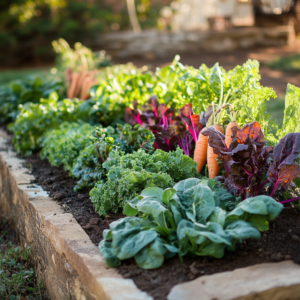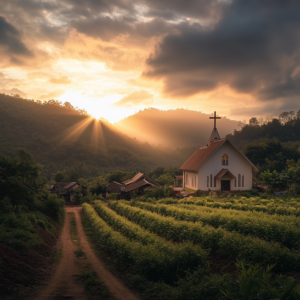It’s almost time to say good-bye to summer and hello to slightly cooler weather. Except for those of us in the south. Here’s hoping anyway. But as summer gives way to cooler temperatures, it’s time to start planning your fall vegetable garden. Fall gardening offers the opportunity to grow hearty crops that thrive in cooler weather and often taste sweeter after a light frost. This general guide will walk you through the best vegetables to plant from August to November, focusing on which ones survive the first frost, how to keep plants alive for later harvests, and region-specific advice for USDA Zones 1-10.

1. Best Vegetables to Plant in Fall
Fall gardens are typically filled with cool-season crops that can handle chilly nights and shorter days. Here are some top picks:
- Leafy Greens: Spinach, kale, collard greens, and Swiss chard are excellent choices. These vegetables thrive in cooler temperatures and can tolerate light frosts.
- Root Vegetables: Carrots, beets, radishes, turnips, and parsnips are perfect for fall planting. They develop their flavors in cooler soil and can be harvested into early winter.
- Brassicas: Broccoli, cauliflower, Brussels sprouts, and cabbage are all hardy plants that grow well in the fall. They become even sweeter after the first frost.
- Garlic and Onions: Plant garlic in the fall for a summer harvest. Onions can be overwintered in milder regions, giving you an early crop in the spring.
- Peas: If planted early enough, peas can produce a fall harvest before the first frost. They prefer cooler weather and can be protected against light frost with row covers.
2. Surviving the First Frost

Frost can be a gardener’s biggest challenge in the fall. However, many vegetables are frost-tolerant and even thrive in cold weather. Here’s how to ensure your plants survive the first frost:
- Hardy Greens: Kale, collards, and Swiss chard can survive temperatures down to 20°F (-6°C). These vegetables are your best bet for continued harvests after the frost.
- Root Vegetables: Carrots, parsnips, and beets can remain in the ground even after a frost, as the cold weather actually sweetens them.
- Brassicas: Brussels sprouts, broccoli, and cabbage can tolerate frost, with Brussels sprouts often improving in flavor after exposure to cold.
- Row Covers: For less hardy vegetables, use row covers to protect them from frost. Floating row covers or frost blankets can help retain warmth and extend the growing season.
 3. Keeping Plants Alive After Frost
3. Keeping Plants Alive After Frost
Extending your harvest into late fall and early winter requires some extra effort, especially in colder zones. Here’s how to keep your garden productive even after frost:
- Mulching: Apply a thick layer of mulch around the base of plants to insulate the soil and protect roots from freezing. Straw, leaves, or even grass clippings work well.
- Cold Frames: Use cold frames to trap heat and protect tender plants from frost. Cold frames can be built using old windows and wood, creating a mini greenhouse effect.
- Hoop Houses: For a larger garden, consider constructing hoop houses. These structures create a warm microclimate, allowing you to grow vegetables well into winter.
- Late-Season Varieties: Plant late-maturing varieties specifically bred for cold resistance. These can be harvested after multiple frosts or stored in the ground for later use.
4. Region-Specific Tips for USDA Zones 1-10
The United States Department of Agriculture (USDA) Plant Hardiness Zones provide a guideline for understanding the best planting times and crops for your region. Here’s what to consider for each zone:
- Zones 1-3: These regions experience early frosts and harsh winters. Focus on fast-growing, frost-tolerant crops like kale, spinach, and carrots. Mulching and cold frames are essential for extending the growing season.
- Zones 4-6: Fall gardening is highly productive here. Plant brassicas, root vegetables, and leafy greens in August or September. Use row covers and cold frames to protect against the first frosts in October.
- Zones 7-8: These zones enjoy a longer fall growing season. Plant peas, brassicas, and root vegetables. Light frost is common, but many vegetables can be harvested through November.
- Zones 9-10: Mild winters mean you can plant almost year-round. In the fall, focus on brassicas, leafy greens, and root vegetables. These regions may not experience frost, but cooler
- temperatures enhance the flavor of crops.
Conclusion
Fall gardening is a rewarding endeavor, offering a bounty of vegetables that can extend your harvest well into the colder months. By selecting the right crops, protecting them from frost, and using season-extending techniques, you can enjoy fresh produce from August to November, no matter where you live. Whether you’re in the frigid north or the mild south, there’s a fall vegetable garden waiting for you to plant.
For more gardening tips and tricks, visit holyhealthyhomesteads.com and join our mission to grow sustainable, self-sufficient communities. Happy planting! 🌱





